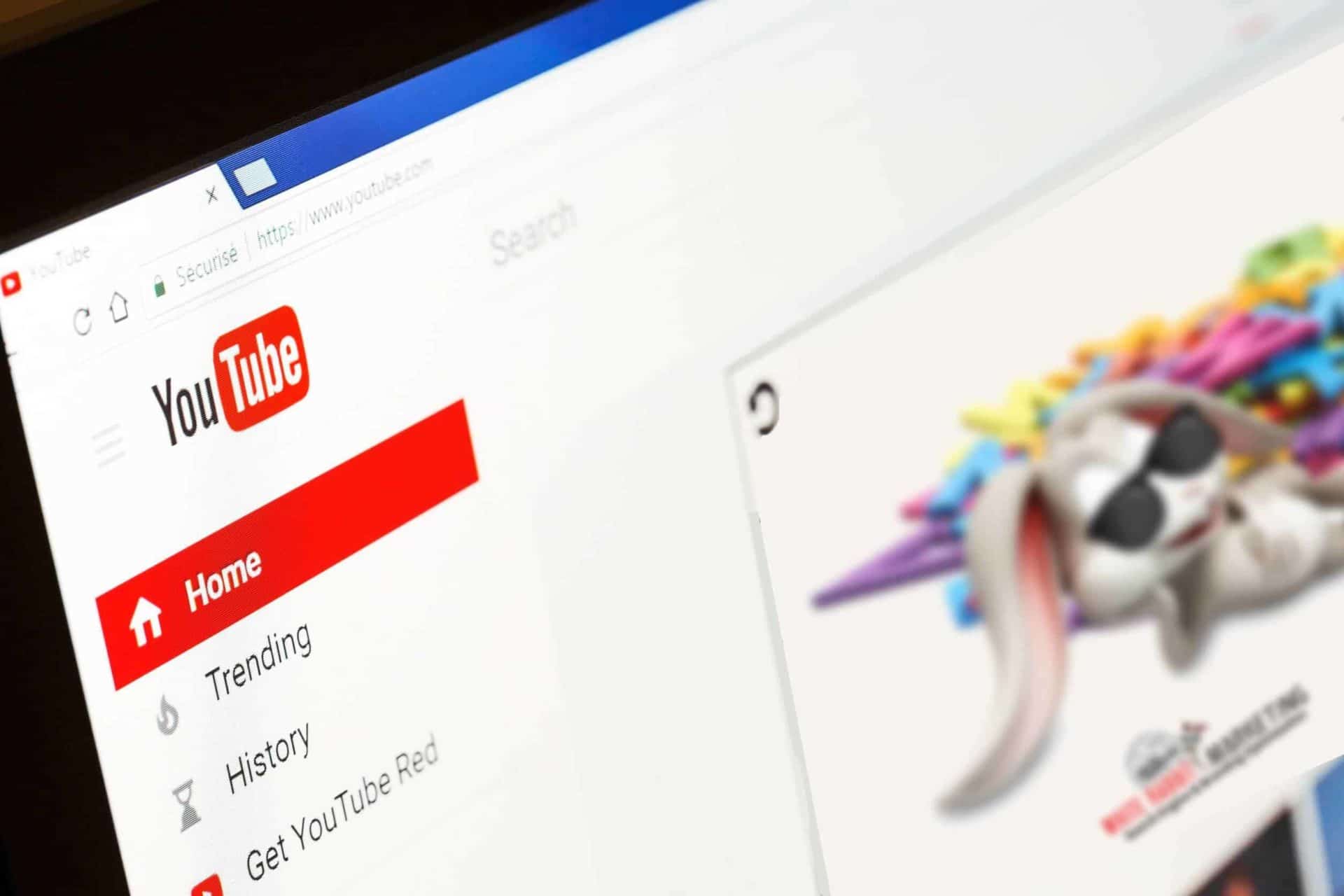When you’re curious about something, you likely read a blog post or watch a how-to video. But who created that content?
In many cases, the answer is a brand or company. You are interacting with a business in a way that’s not just low-key, but helpful to you in a specific way.
There’s a name for this type of interaction: content marketing.
You may have already heard this term. You may even know the basics of content marketing. If so, feel free to skip ahead if you’re eager to get to the best practices.
Before we get to those though, we want to make sure everyone has a clear understanding of what content marketing is, how it works, and why every single business should absolutely be using it.
What Exactly Is Content Marketing?
There are two main types of marketing methods: outbound and inbound.
Outbound is the traditional method. TV commercials. Magazine ads. Even cold calls. This is the kind of marketing featured on the TV show Mad Men.
Outbound marketing methods focus on crafting a sales pitch and sending it out into the world. The hope is that the message will find potential customers and get them interested in your business.
Nowadays, though, people are drowning in information overload. Send out your sales pitch, and it becomes just a part of the general chatter. People tune it out.
Or worse, they can notice it and become annoyed. You’re distracting them from things they want to pay attention to.
Inbound marketing takes the opposite approach: it encourages potential customers to find you.
How so? By creating content that people will find valuable.
Here’s the basic idea. to choosing a business or service isn’t typically completed overnight. Before someone decides to use a business, they will most likely ask friends for recommendations, do their own personal research, and consider multiple businesses.
By providing people with content that will help them through this journey, your business can establish trust with potential customers and give them the confidence to choose you when the time comes.
Good content marketing plans help people to remember your business. To build rapport. To see you as an expert in your respective industry. To forge a connection between you and your audience.
And ultimately to seek your business out when they have a need.
The Advantages of Content Marketing
Does content marketing sound like a lot of work? It can be.
To reach people where they are, you need to craft multiple types of content and ensure it’s accessible from a variety of platforms.
Moreover, as mentioned above, people aren’t likely to become customers overnight – or from a single piece of content. In fact, research shows that potential customers typically look at 11.4 pieces of content before ever making a purchase.
Despite this challenge, research shows that content marketing is the best way to reach your target audience and turn them into customers. How so?
70-80% of users ignore paid ads…
People know when they are being fed information that only benefits the company putting that information online. When potential customers recognize the outbound marketing techniques of the past, they’re less likely to bite.
To put it in real numbers, content marketing generates 3x as many leads as outbound marketing techniques.
Even better, it’s budget-friendly. Content marketing costs 62% less than traditional outbound marketing.
Other benefits of content marketing include:
- Providing viewers with more web content to view.
The more content available, the longer visitors will stay on your site. That means more time to show them why you are the right choice. - More referral traffic.
If your blogs or social media posts are shared by other websites or profiles, your name will reach more potential customers. - Increased conversion potential and overall reputation.
Building rapport and familiarity with customers gives them more reasons to hire you over a competitor that they have never heard of before. - Higher search rank.
Google and other search engines reward sites that continually produce new content and have a presence on social media. These things are built into the DNA of content marketing, but they also help to improve your search rank so more people can find you.
Your competitors are likely already starting to realize these benefits.
In 13% of businesses, content marketing makes up the majority of the marketing budget. That’s pretty impressive when it costs 62% less than traditional advertising techniques!
Moreover, this number is only set to increase – over half of all B2B and B2C marketers predict they will set aside a larger internal budget for content marketing in the future.
Still not quite clear on how content marketing can bolster your business? Take a look at an example.
A Specific Example of How Content Marketing Can Work
Let’s say you are a criminal defense lawyer in the Orlando area. Your target audience is people who have been charged with a crime by the state of Florida.
How do you reach them? Start by thinking about the types of information they will search for:
- Penalties for their particular crime
- Ways to defend against this specific charge
- What happened to others who faced this charge
- What to look for in a criminal attorney
When a potential client does a Google search for penalties, he finds your blog post.
Then he notices your video about the importance of getting representation. From there, he downloads a checklist of what to look for in an attorney.
That document has your contact information at the bottom, so he decides to look you up on social media. He finds several positive reviews. Finally, he decides to pick up the phone and call to set an appointment.
By answering their key questions on your blog, in videos, and in other ways online, you’ve already presented yourself as a valuable, knowledgeable resource. You probably won’t even have to do much in that initial appointment to land the client.
It is, however, important that your content doesn’t try to push someone into making a decision before they are ready.
Think of content marketing as a lure. You want to draw them in. The goal is to establish a connection, get the name of your business in their mind, and drive traffic to your website. They will be encouraged to learn more about you and how you can help.
Any calls-to-action should focus on getting them to reach out to you, rather than the other way around. When they’re ready to hire someone, they’ll feel more comfortable choosing you.
Best Practices: The Types of Content Marketing You Should Use
Though content marketing strategies vary depending on the specific nature of your business, there are general best practices that just about everyone should follow.
Below are the methods that have been shown to be the most effective, as well as how to implement each of these methods.
Blog Posts
A blog is considered a baseline content marketing strategy – 78% of companies are regularly posting articles and blog posts relevant to their business. And 45% of marketers say that blog posts are the most important content strategy.
Basically, if you have a website, you should have a blog.
So what do you blog about? Think about what information your customers need before deciding to use your business. They will most likely search using specific keywords to find answers or information. Keep these keywords in mind when coming up with topics for blog posts.
If you’re a dentist, posts about toothaches, teeth whitening, and specific types of dental procedures may be valuable. Plumbers could create a series of blogs and videos on common plumbing problems.
Remember that blogs are meant to provide valuable information to people, so you’re trying to reach an audience that isn’t ready to buy just yet. These posts should set you up as an authority on the topic, and in your industry in general, so you seem like a trusted resource.
One of the easiest and most effective types of posts to create is a “listicle” or list post. Thirty percent of all blog posts are lists for a very simple reason – people read them because they seem quick, clear, and easy to understand. The post from Genie Recycling doesn’t only hold an in-depth guide to making extra money but is also visually brawny.
That being said, your goal should never be to get hundreds or thousands of people to read a single post. In fact, most of the individual blog posts you write probably won’t bring hordes of people to your site. Sometimes this can happen, but what you’re looking for is more of a cumulative effect.
Every blog you write is a chance for a specific group of people to find you based on what they’re searching for. As more and more blogs are posted to your site, there are more chances you will turn up in more searches simply because the content is there.
Additionally, as mentioned above, consistently creating new content for your site increases your search rank because this is something Google cares about. Not only will you have a bunch of new content for people to find based on how they search, but it is also more likely to show up closer to the top of the results.
Blogs are also an incredibly valuable part of any social media strategy. First off, if the right person finds a post and shares it, you can get a nice boost, both to your social media accounts and to your site itself.
Beyond this, blogs can be repurposed. If you send out an update whenever a new blog post goes live, you can save yourself the time of coming up with a new social media post, and you’ll also drive more people to the blog post itself.
Infographics
Presented by Skilled.co
Did you know that 90% of the information that goes to the brain is visual? A complicated written explanation can often be conveyed – and understood far faster – with a single image.
Infographics take complicated concepts and present them to people using a mix of images, words, and numbers. By limiting the amount of information that people have to read, they are more easily able to remember any facts and statistics you offer.
This form of content marketing is extremely popular among users. Infographics are liked and shared on social media 3x more than any other type of content, and users are 30x more likely to read an infographic than a typical article.
Why not just create infographics then? There are three main reasons.
First, generally speaking, infographics cost more than written content. Typically, you can create multiple pieces of written content for the price of a single infographic.
Second, certain topics lend themselves to infographics better than others. Say you’re a bike shop owner. A good infographic might be on accident statistics and bike safety. Those are things that can be easily displayed graphically. In contrast, something like “Best Bike Chains” probably works better as a blog post.
And third, blog posts provide more written content for Google and other search engines to consume, which can improve your search rank. A single infographic may have less than a hundred words, and most of those words will be within an image file, making them unreadable to search engines.
Video
If a business uses video in their content, they are 50 times more likely to be found on the first page of Google results. Facebook gets 8 billion video views daily.
What do you put in your videos? Consider the following effective types of video content
- Customer testimonials
- Explainer/tutorial videos
- Demonstration videos
These videos don’t have to be long. Viewers typically don’t have long attention spans anyway. The benefits of creating videos present themselves quickly: if an email subject line contains the word “video,” the open rate increases by 19%, click-through rates increase by 65%, and unsubscribes are reduced by 26%.
The downside? Mostly, it comes down to cost. While videos can be produced far more cheaply today than ever before, there still tends to be more expense involved in creating a professional video when compared to other content marketing methods.
Still, utilizing videos in targeted ways can be incredibly effective, and there are ways to keep costs reasonable.
Other types of content marketing that you may want to consider, depending on the type of business you have, include white papers, eBooks, email newsletters, and more.
Best Practices: Distributing Your Content
Once you publish all this great content to your website or social media channels, what is next?
Google and other search engines can be powerful drivers of traffic when you produce SEO-optimized content. However, search will only take you so far. You need additional ways of getting it out there.
What are they? There are two main distribution methods, and one we have already touched on.
Social Media
Content marketing allows businesses to form a more personal and trusting relationship with their target audience.
Social media helps you stay connected. If you can get people to add your business on social media, you will have a way to reach them where they already are, notifying them about new content and responding to their questions and feedback.
If you do not already have social media accounts for your business, setting them up should be at the top of your to-do list. The appropriate platforms will depend on the type of business you run, but consider signing up for at least three of the following:
- Snapchat
The exact nature of your social media content, including your tone while responding to customers, will depend on your target audience.
In general, these three types of posts perform the best:
- Videos
- Images
- Offers and promotions
Be careful though. While people are getting more used to businesses promoting themselves on social media, do it too much or post content that is too sales-oriented and you can quickly lose followers.
Though email may seem like an “old school” method of communication now, do not underestimate the power of getting into a person’s inbox.
Two hundred and four million messages are sent through email every minute, and 93% of marketers say that email is the most important channel for distributing content.
Why? Because email has proven to be 40 times more effective at acquiring new customers than Facebook or Twitter.
One of the most effective ways to use email is to create an eNewsletter and send it out to subscribers. In it, you can include:
- Images
- Brief intros of blog posts (with links to the full text)
- Sales and promotions, news and updates (for example, if you won an award or start offering a new product or service)
- Links to videos
- Downloadable content
The Right Strategy, the Best Practices
So now you know about a few of the best types of content marketing and how to get your message out to users. Understanding the content types and distribution methods isn’t a strategy though.
How often should you put content up? Should you focus on one type of content over another? Where will you find the best ROI?
To a certain extent, the answers to these questions depend on your business and the audience you want to reach. However, there are certain trends you would be wise to follow.
Be consistent, be frequent.
If people like the content you create, they want to be able to depend on it. Posting once every few months won’t cut it. Neither will posting every day over the summer and then stopping.
You don’t have to post all the time, but at a minimum, you should do so at least once a week – on the same day and (preferably) at the same time.
Think visually.
You read above how infographics and videos tend to attract more people, but it goes beyond this.
Even written blog posts can receive a big boost just by adding a picture. How big of a boost? They get 94% more views that blogs without images.
Don’t feel like you have to do it all.
Creating a constant stream of content can be a daunting task, especially if you plan to do it on a weekly – or even daily – basis. Your business doesn’t necessarily have to create (or even hire someone else to create) all the content you share.
In general, your company should create 65% of the content that you distribute. Around 25% of the content can be curated, and 10% or less can be syndicated content.
Wondering about the right content marketing strategy for you?
White Rabbit Marketing has helped dozens of businesses in a wide variety of industries to bolster their online presence and attract the audience they want.
Reach out today to set up a free consultation.














 Want 2017 SEO Success Factors at a Glance? Check Out This “Periodic Table”
Want 2017 SEO Success Factors at a Glance? Check Out This “Periodic Table” Whiteboard Animations, Video Scribing: What’s the Big Deal?
Whiteboard Animations, Video Scribing: What’s the Big Deal? Content Marketing for Small Businesses: Are You Reaping the Benefits or Sabotaging Yourself? (Part 3)
Content Marketing for Small Businesses: Are You Reaping the Benefits or Sabotaging Yourself? (Part 3) Content Marketing for Small Businesses: Are You Reaping the Benefits or Sabotaging Yourself? (Part 2)
Content Marketing for Small Businesses: Are You Reaping the Benefits or Sabotaging Yourself? (Part 2) Content Marketing for Small Businesses: Are You Reaping the Benefits or Sabotaging Yourself? (Part 1)
Content Marketing for Small Businesses: Are You Reaping the Benefits or Sabotaging Yourself? (Part 1)